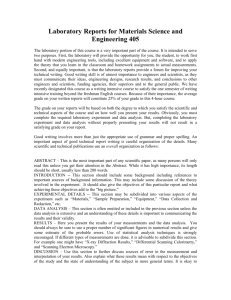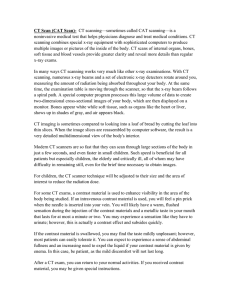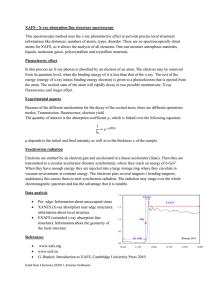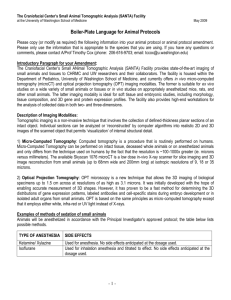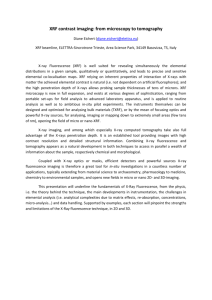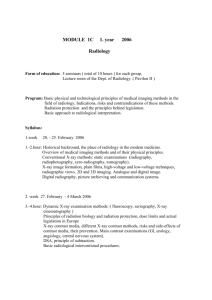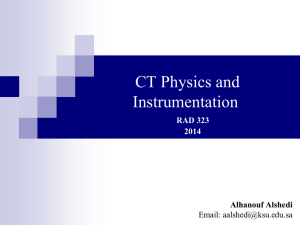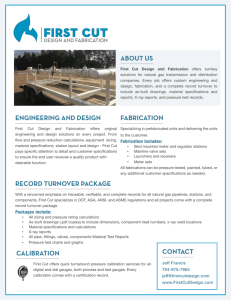Philip Withers
advertisement
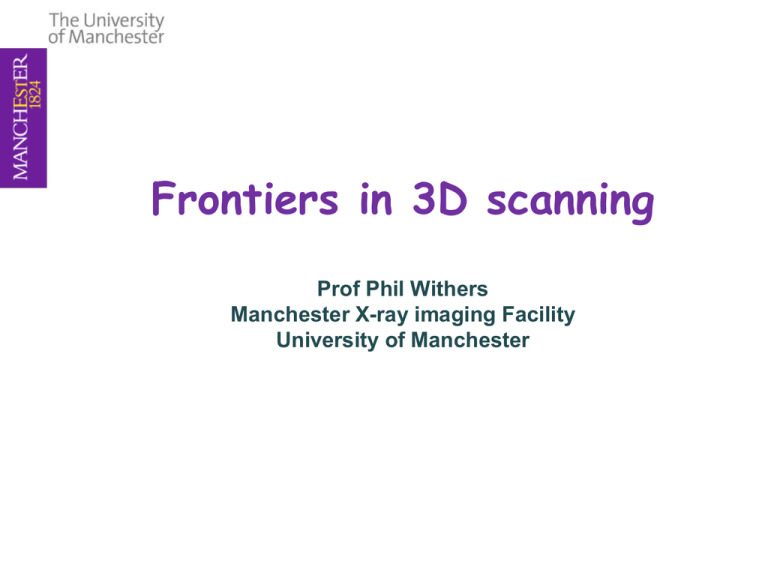
Frontiers in 3D scanning Prof Phil Withers Manchester X-ray imaging Facility University of Manchester Volume Scanning Computer Tomography (CT) • The great advantage of computer tomography is that not only do you get the external surface geometry you capture any internal features as well. • The principle is simple; namely to collect a series of 2D projections acquired from different angles from which an image of the original 3D volume can be reconstructed using a computer algorithm • Range of resolutions from mm to tens of nanometers From 3D object to 3D fabrication 3D fabrication Multiscale 3D Imaging for Fabrication Resolution length scales 1mm 10 m 1 m 50 nm 5 nm Electron Lab. X-ray Synchrotron X-ray Very Large object scanning •Lab X-ray systems • 200m spatial resolution • 6MeV X-ray Source Accurate 3D model Large object imaging • 5m resolution (say); • 320kV microfocus • 500mm objects • 5-axis 100kg capacity CT manipulator Large object fabrication •Tailored implant design Micron Scale • 0.7-1.0m spatial resolution (Lab or synchrotron) • 150mm max samples size typical •Synchrotron 1 tomograph per second/Lab 1 per 4 hours Phase contrast 1mm Wasp fossil Nanotomography (50nm) In scanning electron microscope systems In SEM serial sectioning Electron beam Sample Camera target Sample rotation stage X-ray beam In SEM X-ray CT Lens based lab. X-ray systems Nanotomography (50nm) •Tailored optics/mircofluidics, MEMS devices, membranes, etc Berenschot et al. Concluding remarks • A range of modalities for scanning objects in true 3D (including interior structure) • X-ray energy must be higher the larger the object • Electron tomography well suited to 3D scanning at submicron scales • Packages exist to convert 3D tomography images to CAD for 3D fabrication
